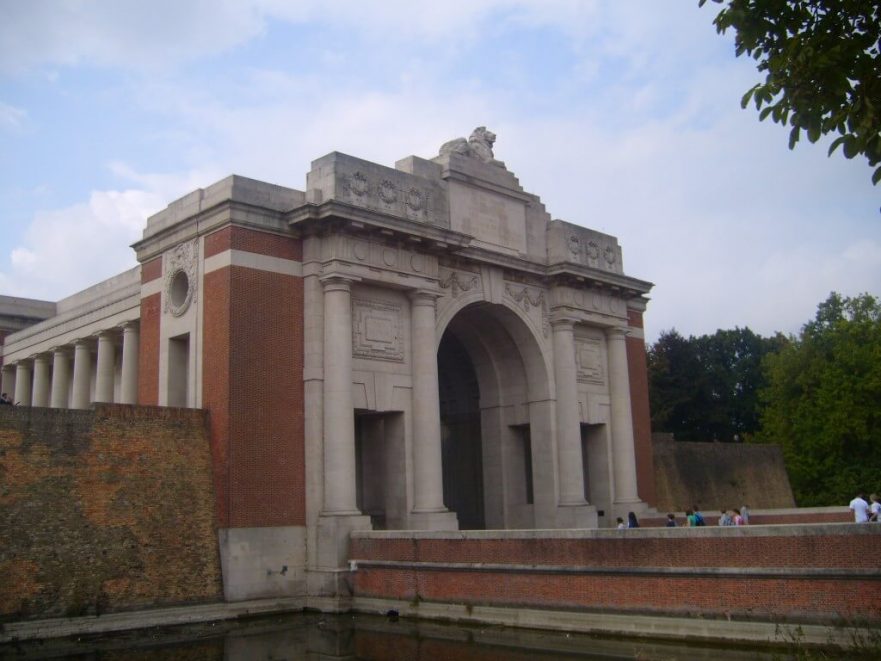There are countless battlefields sites, memorials and cemeteries that we feel should be visited if you travel to Belgium and stay around the Ypres sector of the Western Front. However there are certain places which should be on the itinerary or bucket list of anyone planning a battlefields tour and we have suggested seven below.
- Tyne Cot
Tyne Cot is the largest British war cemetery anywhere in the world. Aerial views of the cemetery show a clear resemblance to a cathedral which was one of the original aims by the designer Sir Herbert Baker. Due to the harrowing nature of the battles which took place here two mourning angels kneel on top of the dome covered pavilions at either end of the large memorial wall. To experience the real emotion and loss that was brought by this devastating conflict you must walk amongst the vast white headstones and recognise the silence of all those around you. We would be astonished if you are not brought to tears as you consider the impact that taking Passchendaele ridge had on so many young men. A number of German pill boxes lie within the cemetery and poplar trees signify the huge explosions which took place on this part of the front. It is said that the cemetery takes its name from the Northumberland Fusiliers who when attacking the hill during the Battle of Passchendaele found the pill boxes to resemble Tyne side cottages. There are 11.953 graves within the cemetery and almost 35,000 soldiers who have no known grave are commemorated on the memorial wall. Most of these deaths took place during the devastating mud of the Third Battle of Ypres better known as Passchendaele. When Mark visits Tyne Cot he always pays his respect to Douglas Hannay from his home village of Garlieston who died age 20 on 6th November 1917. Douglas was a Royal Marine who lived at Pouton Farm and who died in the last few days of the Battle of Passchendaele. As proud Scots we try to reflect on the impact that this battlefield had on our nation and we have always taken a piper with us to Tyne Cot to play highland cathedral as we pay our respects.
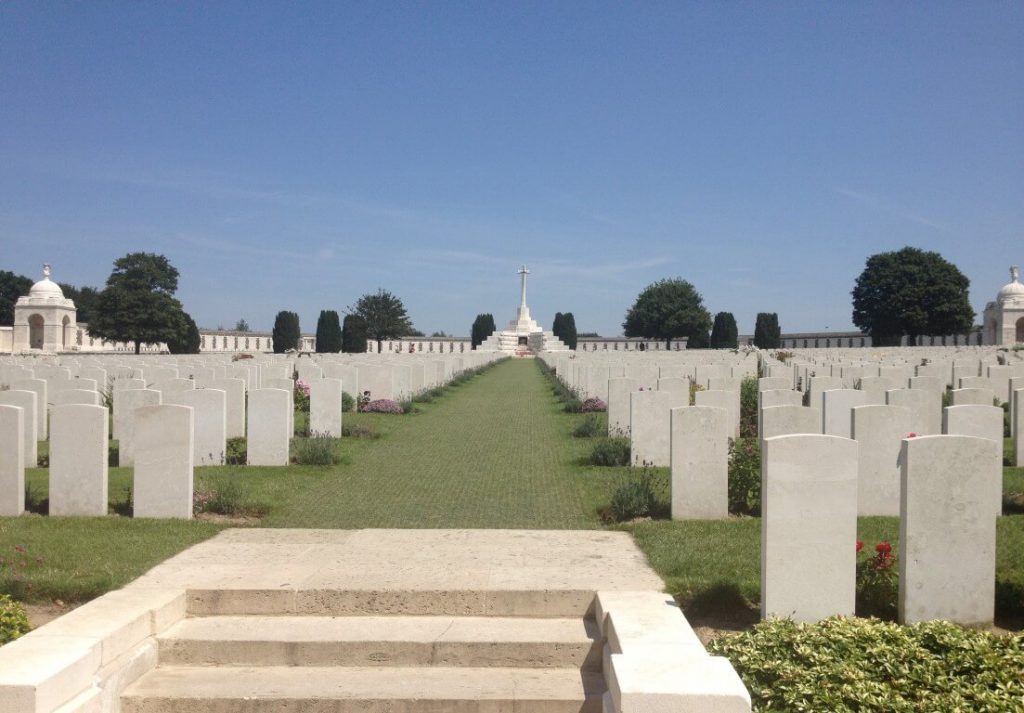
- Menin Gate
While visiting the historic town of Ypres it is impossible not to be impressed by the Menin Gate which has been built across the canal to commemorate the port exit which many British soldiers crossed on their way to the front line trenches. The panels of the Menin Gate bear the names of over 54,000 soldiers who have no known graves and whose bodies lie within the Ypres Salient battlefields. Since 11th November 1929 every night at 8pm and in all weathers the buglers will play Reveille and the Last Post to commemorate all the soldiers who lost their lives. The sheer numbers from all over the world that that turn out for this ceremony each night to pay their respects and reflect on the ultimate sacrifices that so many made gives an indication of how special this ceremony is. We think that everyone should experience this ceremony their lifetime at least once. It is also possible to take part in this special ceremony through applying through the Last Post Association and something which we have had the privilege of being able to do on a number of occasions.
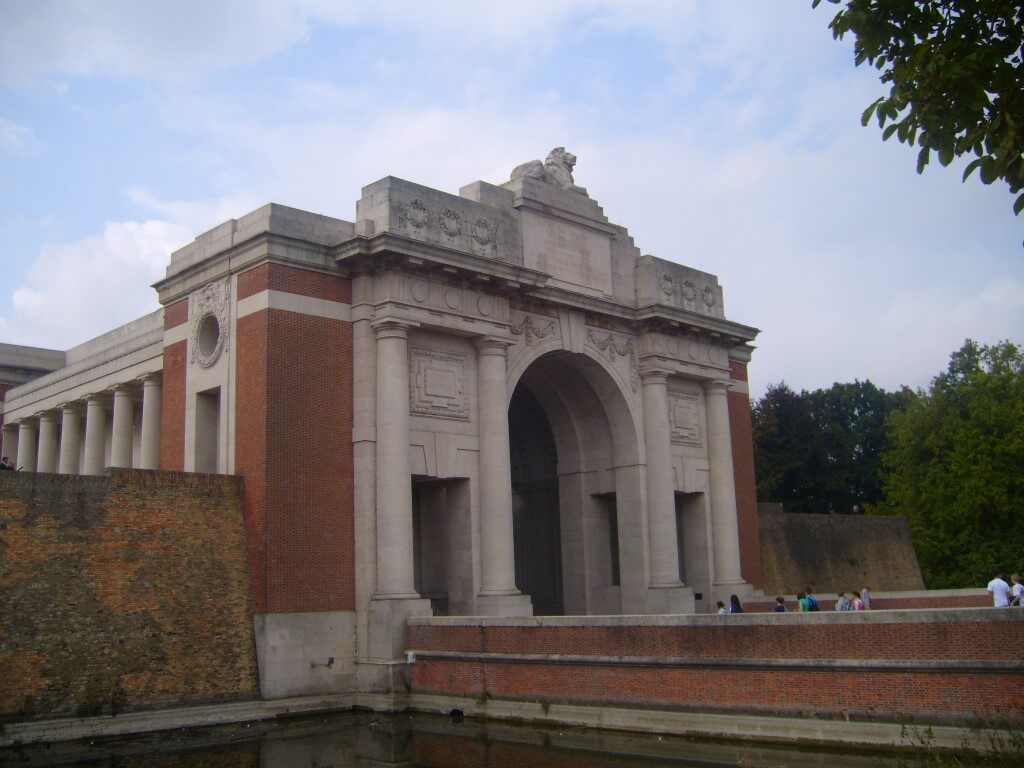
- Sanctuary Wood
No visit to the Western Front would be complete without walking a length of the actual trench system. One of the best places to do this is at Sanctuary Wood preserved trenches. Sanctuary Wood got its name as in late 1914 it was a quiet sector and had taken few heavy shells and the men felt it was a place of safety. However by the 14th November 1914 the wood was shelled relentlessly and the sanctuary was safe no longer. The Schier family preserved the trenches, dug outs, splintered trees and various artefacts and during World War Two they hid many of these items from the visiting Nazis. Sanctuary Wood is known as Hill 62 which, like many places, outlines the height above sea level that the battles here took place at. When we visit this area we always encourage everyone to bring stout footwear and to walk the mud splattered trenches with their duck boards and corrugated defences. The long dug outs give a limited but hard-hitting impression of how dark and frightening the conflict must have been.
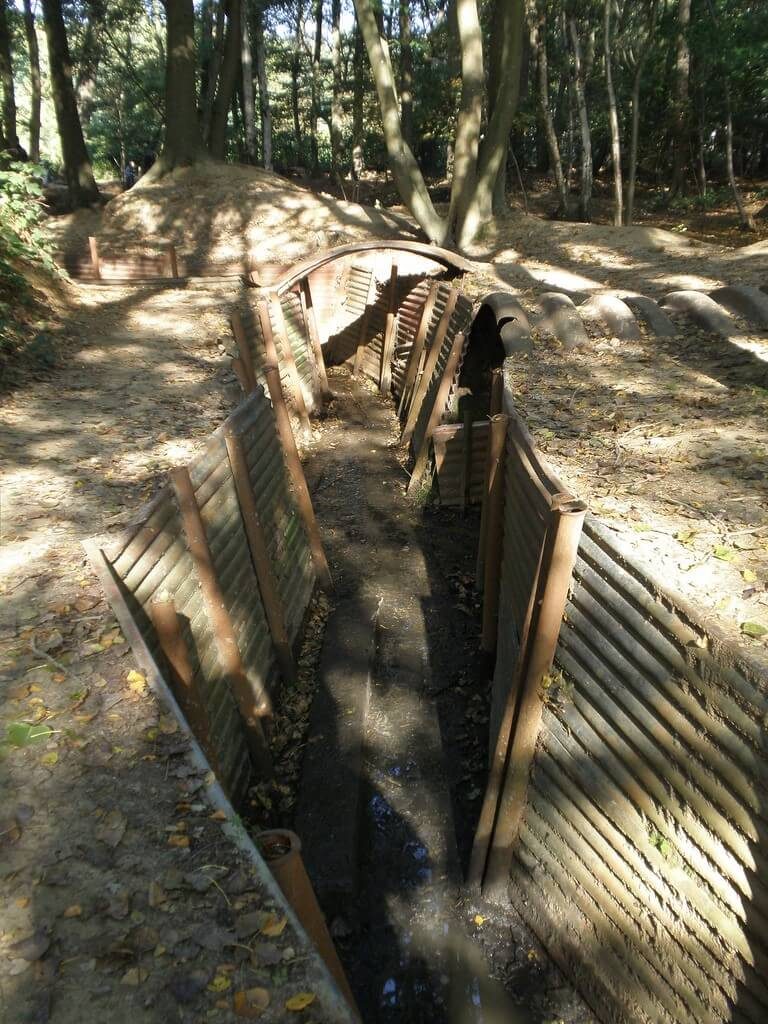
- Essex Farm
As you enter Essex Farm cemetery you will immediately notice the Albertina memorial to the surgeon and poet John McCrae. Beside the cemetery and the canal is a number of concrete dugouts which were used as dressing stations and where the lives of many troops were saved by surgeons whilst others perished and were buried in the adjoining cemetery. Canadian Medical Officer Colonel John McCrae in the spring of 1915 during the second battle of Ypres was working constantly as men were being injured from the relentless heavy shelling. On the 2nd of May McCrae witnessed his friend Alexis Helmer being blown to pieces by a direct shell hit and this moved McCrae to write his famous poem In Flanders Fields
In Flanders fields the poppies blow
Between the crosses, row on row,
That mark our place; and in the sky
The larks, still bravely singing, fly
Scarce heard amid the guns below.
We are the Dead. Short days ago
We lived, felt dawn, saw sunset glow,
Loved and were loved, and now we lie
In Flanders fields.
Take up our quarrel with the foe:
To you from failing hands we throw
The torch; be yours to hold it high.
If ye break faith with us who die
We shall not sleep, though poppies grow
In Flanders fields.
When we visit the dressing station concrete dugouts we always get a member of the tour to read the poem aloud whilst others consider the noise and unbelievable devastation that was going on around them. Very few finish reading the poem without taking a long pause and showing emotion in what is an emotive and wonderful place to visit.
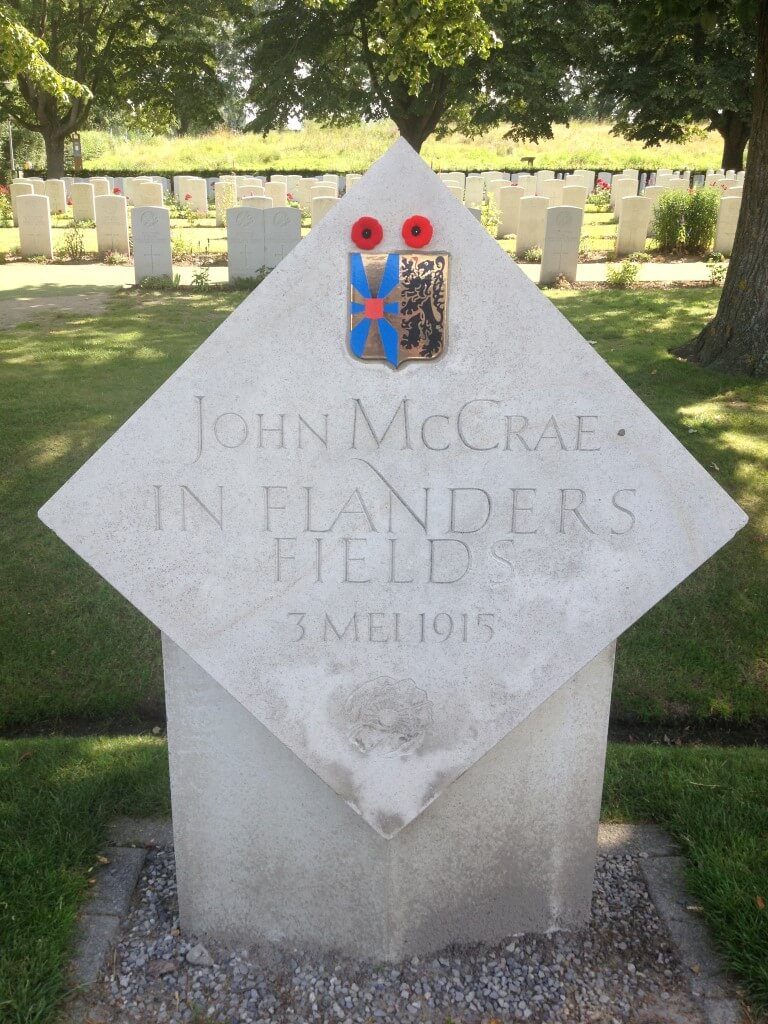
5. Ypres Cemeteries
Across the Ypres sector of the Western front there are hundreds of cemeteries ranging from Tyne Cot to those with only a few headstones. However their layout and look are very similar. Most cemeteries have A Cross of Sacrifice which was originally designed by Sir Reginald Blomfield however larger cemeteries will also have a Stone of Remembrance which was designed by Sir Edwin Lutyens. All the stones of the Remembrance have the inscription, Their Name Liveth for Evermore. It is meant to appeal in its simplicity to all races and denominations. The quote was suggested by Rudyard Kipling. The headstones are of identical shape and made of Portland stone. The markers are inscribed with the name of the soldier, rank, date of death and a religious symbol. Families could request a short, personalized inscription and if the body could not be recognised then the grave would be marked as unknown. The name of the cemetery is carved in stone by the entrance as well as the dates of the war or of the particular battle. The grounds are maintained by the Commonwealth War Graves Commission. We would suggest that there are several headstones that are must see when visiting the Ypres Salient.
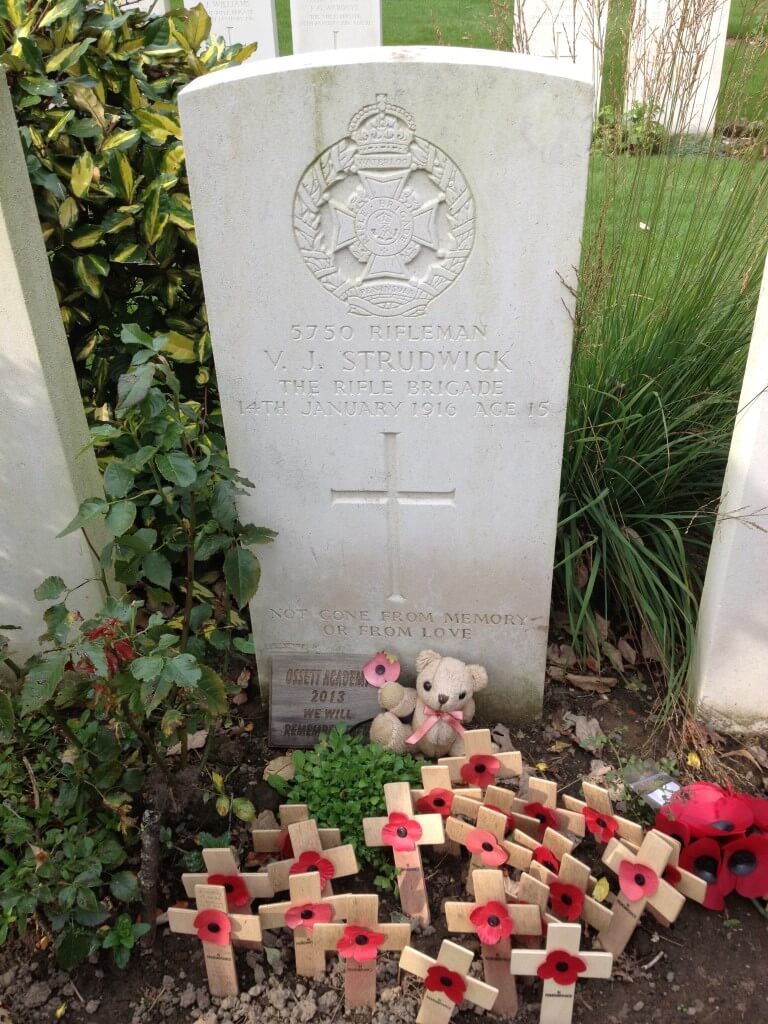
One of the youngest soldiers to die during the war, Valentine Joe Strudwick, is buried in Essex farm Cemetery. Noel Chavasse is the only soldier to receive two Victoria Crosses during WW1. Chavasse was an incredible man and inspiration and in his role as a doctor his bravery was recognised by the highest military honours. Noel Chavasse is buried at Brandhoek and his headstone is well rightly visited. There are also local soldiers buried at Brandhoek including Bobby Smith from the Stewartry. One of very few females buried on the Western Front is Nellie Spindler who is commemorated at Lijssenthoek Cemetery. Nellie was a staff nurse who was killed as she tended others in August 1917. This grave is also well visited and is seen as a pilgrimage to the pivotal role that women played in the Allied victory.
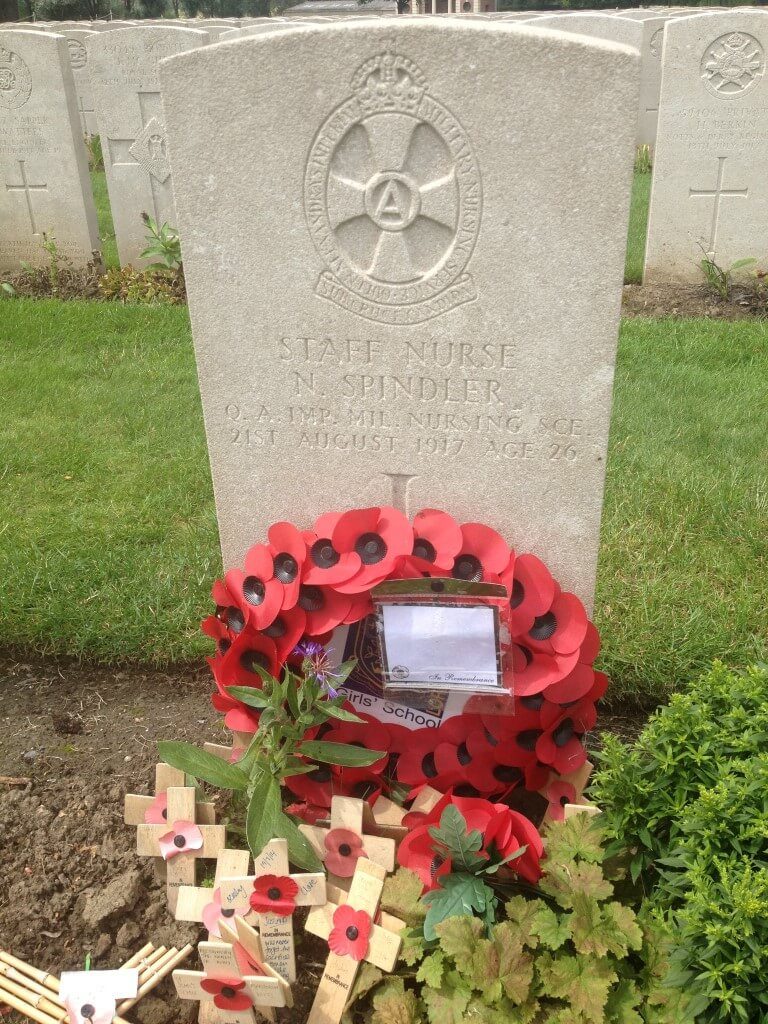
6. In Flanders Field Museum, Ypres
This museum is based in the Cloth Hall in central Ypres and is penned from the title of McCrae’s poem. The cloth Hall was completely destroyed during the conflict and was painstakingly rebuilt as a clear act of defiance and reconstruction. The gothic architecture of this magnificent building compliments the superb cloth and lace that the town is famous for. The spires of the cloth hall can be seen for miles around and the fantastic museum within its wall symbolise the sacrifice made by so many including the local people who lived within the Ypres Salient. Along with hundreds of authentic objects and images from the horrors of the first World War the renovated In Flanders Museum has some fantastic exhibitions and interactive stations with touch screens, video projections and soundscapes. Each person that visits the museum is given a poppy bracelet which when scanned will let the visitors find out more about some individuals personal stories and experiences of war. The museum today welcomes visitors from all over the world and is a must see visit when you are in the Ypres Region.
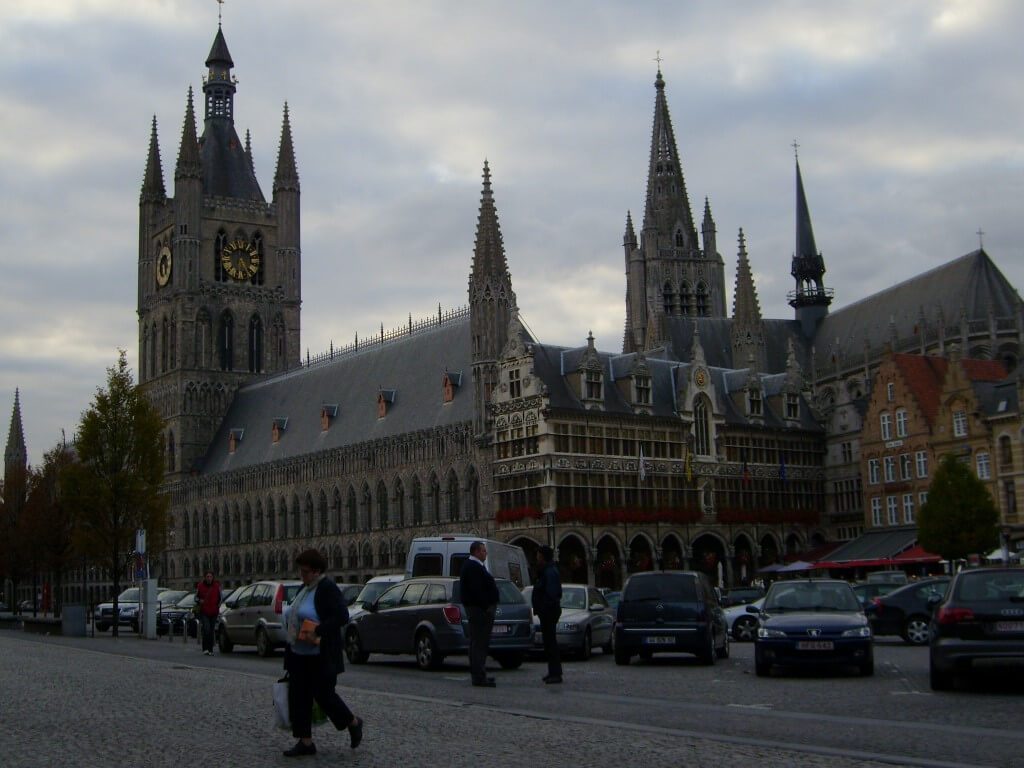
7. Scottish Memorials
The Scottish Monument in Flanders at Frezenburg was unveiled on the weekend of the 90th Anniversary of Passchendaele on 25th August 2007. The monument is in the style of a Celtic Cross of pink Scottish granite and pays tribute to all the Scots who fought on the Western Front including those from other countries who fought in Scottish regiments. The monument commemorates the attack that took place on this site on the 17th August 1917 and is close to the huge underground Bremen Redoubt which was part of the strong German Trench structure.
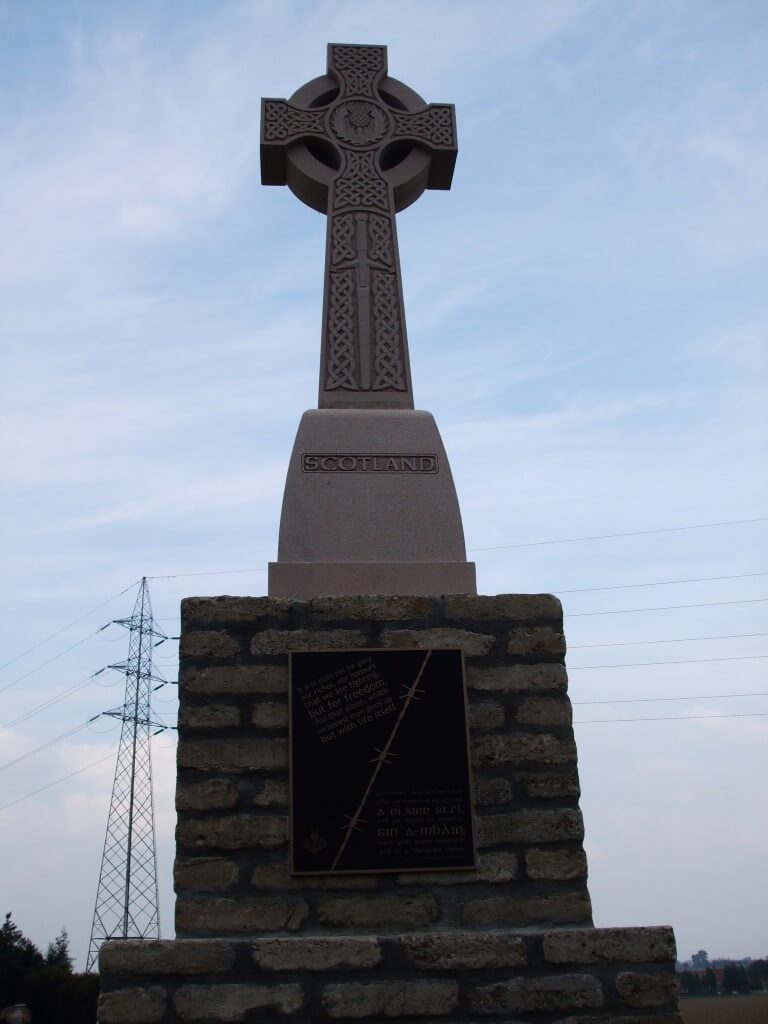
The Black Watch Memorial unveiled recently commemorates the battle of Nonne Boschen on the 11th November 1914. The statue depicts a kilted Black Watch soldier carrying his Lee Enfield Rifle with bayonet fixed. It honours 8,960 Black Watch soldiers and over 20,000 that were wounded during WW1. The battle is well known because as part of a bigger offensive to take polygon Wood and this was actually the only area where the allies made an impact.
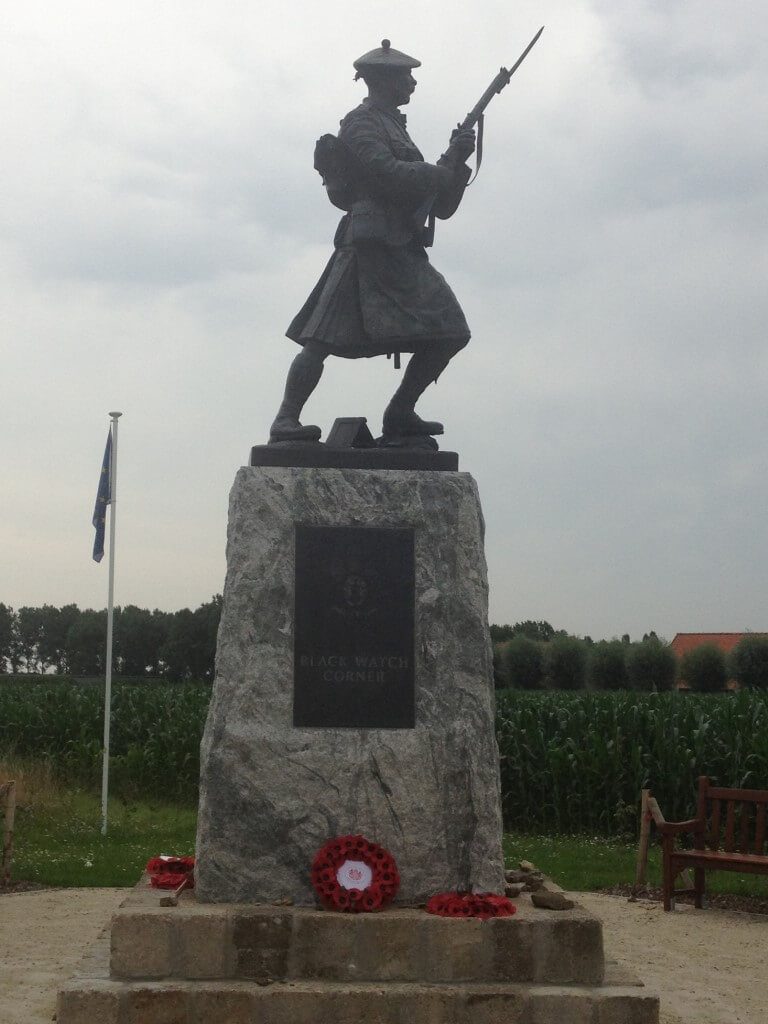
All of these sites are included in our itinerary for our fantastic four night, five day WW1 Battlefields tour on 4-8th April 2016. The deadline for booking a place on this tour is January 30th 2016. Click on the link below to find out more information.
http://solwaytours.co.uk/tour/world-war-one-battlefields-tour/



